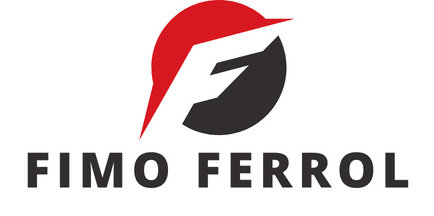How Can Community-Based Urban Renewal Programs Improve Neighborhood Health?

In today’s fast-paced, urban world, community-based urban renewal programs are becoming increasingly significant. These initiatives are designed to revitalize both the physical landscape and the socio-economic dynamics of neighborhood areas. They cater to diverse aspects of urban life like housing, health, public engagement, and social inclusion of residents. As pivotal stakeholders in this process, developers, city planners, community scholars, and residents come together to redefine the future of their localities. Interestingly, the impact of these renewal programs extends beyond aesthetics or infrastructure; they play a crucial role in improving neighborhood health. Let’s explore how!
Leveraging Public Engagement in Urban Planning and Development
Public engagement is a cornerstone of urban renewal programs. It invites residents to participate actively in the planning and development process, thereby fostering a sense of ownership and commitment towards the community. This engagement is not limited to town hall meetings; it extends to online platforms and tools, including Google’s suite of collaboration apps.
En parallèle : Can a Mediterranean Diet Enriched with Nuts Improve Memory in the Elderly?
Urban renewal projects often encompass initiatives like creating more green spaces, improving housing conditions, and enhancing local amenities. These developments cater to the basic needs of residents, improving their living conditions and, consequently, their health. For instance, urban green spaces are known to promote physical activity, reduce stress, and improve mental health.
Improving Housing Conditions through Urban Renewal
Housing is a crucial aspect of urban renewal, especially in low-income communities. The goal is not just to beautify the neighborhood but to provide affordable, quality housing that meets the needs of the residents. Through these renewal programs, old, dilapidated buildings are often replaced or renovated to improve living conditions.
A lire aussi : What Are the Implications of Smartphone-Based Dermatology Diagnostics?
Poor housing conditions can lead to health issues like respiratory diseases, mental health problems, and infectious diseases. By addressing housing issues, urban renewal programs can substantially improve the health outcomes of a community. For instance, reducing overcrowding and improving ventilation in homes can help decrease the prevalence of respiratory diseases like asthma.
Enhancing Local Amenities and Services
Urban renewal programs often work towards upgrading local amenities and services, thereby improving the overall quality of life. This could involve upgrading public transport links, improving local schools, or ensuring easy access to healthcare facilities.
Better access to healthcare services means that residents can avail timely medical assistance, leading to improved health outcomes. Equally important is the impact on mental health. Easy access to amenities and services reduces stress and anxiety levels among residents, positively impacting their mental wellbeing.
Fostering Social Inclusion and Community Cohesion
Urban renewal programs can foster social inclusion and community cohesion by creating shared spaces and promoting community events. Such initiatives bring residents together, strengthening their sense of belonging, and enhancing their social wellbeing.
Social inclusion impacts health in many ways. It reduces isolation and loneliness, which are significant risk factors for mental health issues. Also, a strong, cohesive community can support its members in times of crisis, contributing to resilience and overall health.
Driving Economic Revitalization
Urban renewal programs also focus on economic revitalization, including job creation and improving the local economy. Economic stability is a key social determinant of health. Job creation leads to financial stability, which in turn contributes to better health outcomes.
Moreover, revitalizing the local economy can lead to a better provision of services, from healthcare to education, directly impacting the health of the neighborhood.
In conclusion, community-based urban renewal programs are crucial not just for city development but for neighborhood health. By fostering public engagement, improving housing conditions, enhancing local amenities, and driving economic revitalization, they contribute significantly to the physical and mental health of residents. It’s about creating a healthier, happier, and more vibrant city life for us all.
Strengthening Community Resilience Through Urban Renewal Programs
Community resilience is a key objective of urban renewal programs. As such, these programs aim to strengthen a community’s ability to adapt to change and recover from crises. They can influence resilience in several ways, such as through facilitating community engagement, improving the built environment, and promoting economic stability.
Community engagement is instrumental in strengthening community resilience. When residents are involved in decision-making processes, they are more likely to feel a sense of ownership over the outcomes. This can lead to increased community pride, cohesion, and ultimately, resilience. Using online tools such as Google Scholar and Crossref, community members can access valuable resources and research to inform their engagement in the renewal process.
Improvements to the built environment, including the creation of green spaces and well-designed public spaces, can also enhance community resilience. Green spaces, for example, not only improve physical and mental health but also serve as meeting places that foster social connections. Public spaces, on the other hand, can facilitate community activities and events, further contributing to social cohesion and resilience.
Lastly, economic stability, achieved through job creation and local economic revitalization, can significantly bolster community resilience. When long-term residents have stable incomes, they are better equipped to handle personal crises and contribute to their communities.
The Role of Local Government and Real Estate in Urban Renewal Programs
The local government and real estate sector play pivotal roles in community-based urban renewal programs. They are key decision-makers in these initiatives and can significantly influence their direction and outcomes.
Local governments are responsible for creating the frameworks and conditions that enable successful urban renewal. They can leverage their powers in planning, regulation, and funding to drive projects that align with community needs and aspirations. For instance, local authorities can prioritize projects that create green spaces or enhance public health infrastructure, depending on the community’s needs identified through public engagement.
The real estate sector, on the other hand, can contribute to urban renewal by investing in quality, affordable housing for low-income residents. Real estate developers can work closely with local governments and community members to ensure that their projects meet the community’s housing needs and preferences.
In both cases, effective engagement with community members is key. This can be facilitated through town hall meetings, online platforms, and other engagement tools. The goal is to ensure that the urban renewal process is inclusive and responsive to the community’s needs and aspirations.
Conclusion
In conclusion, community-based urban renewal programs play a vital role in improving neighborhood health and strengthening community resilience. They achieve this by fostering public engagement, improving housing conditions, enhancing local amenities, driving economic revitalization, and creating public and green spaces.
These programs require the active participation of various stakeholders, including community members, local government, and the real estate sector. Through collaboration and mutual understanding, these stakeholders can ensure that urban renewal efforts respond to the community’s needs and aspirations, leading to long-term benefits for residents’ physical and mental health.
Looking ahead, the continued success of these programs will rely on their ability to adapt to changing community needs and dynamics. Therefore, ongoing public engagement, research, and evaluation are crucial. Tools like Google Scholar, PubMed, and Crossref can help inform these processes, ensuring that urban renewal efforts are evidence-based and effective in improving health and quality of life in urban neighborhoods.
